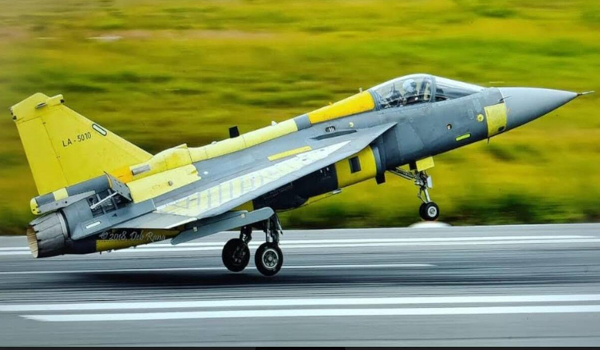State-run plane maker Hindustan Aeronautics Limited (HAL) has set a March 2022 deadline to carry out the first flight of the LCA (light combat aircraft) Mk-1A jet after wrapping up the necessary design activities, HAL chairman R Madhavan said.
HAL will also next week announce a multimillion-dollar engine deal with US firm GE Aviation for 99 F404 engines to power India’s latest indigenous fighter, he said. The developments come six months after the defence ministry awarded a ₹48,000-crore contract to HAL for 83 LCA Mk-1A jets for the Indian Air Force (IAF). The first Mk-1A aircraft will be delivered to the air force by March 2024, with the rest slated to join its combat fleet by 2029.
“The preliminary design review is over and so is the critical design review for several systems, including mission computer, digital map generator and digital flight control systems. We are integrating the active electronically scanned array (AESA) radar and the electronic warfare suite on the final operational clearance (FOC) version of the LCA. After it is proven there, we will integrate it on the final Mk-1A version,” the HAL chairman said. AESA radar provides superior detection, tracking and targeting capabilities.
The contract for the 83 Mk-1A jets took the total number of LCA variants ordered to 123. The 40 LCAs already ordered by IAF are in the initial operational clearance (IOC) and the more advanced FOC configurations. The LCA Mk-1A will come with a raft of additional improvements over the FOC aircraft, making it the most advanced LCA variant so far.
Madhavan said HAL was working with Aeronautical Development Agency, a principal partner in the fighter jet project, on software development for the Mk-1A jet and the effort was progressing smoothly. “This is for all the software that has to be changed in the Mk-1A aircraft because of new systems coming in. We plan to carry of out the first flight of the aircraft by March 2022 and get the certification from the Centre for Military Airworthiness and Certification (CEMILAC) by mid-2023 before kicking off production,” he said.
A regulatory body under the Defence Research and Development Organisation (DRDO), CEMILAC is responsible for the airworthiness certification of military aircraft, helicopters, aero-engines and air-launched weapons.
The delivery schedule requires HAL to provide the IAF with the first two aircraft in 2024, eight in 2025 and the remaining in batches by 2029 at the rate of 14 to 16 fighters every year.
“We are working on a tight schedule, but HAL may deliver all the aircraft ahead of time. We will deliver a new aircraft with significant changes three years after the signing of contract. Even foreign original equipment manufacturers (OEM) take about five to six years to do something like that,” the HAL chairman said.
He said the deal for the F404 engines for the Mk-1A aircraft had been finalised, with HAL striking a good bargain with GE Aviation after several rounds of negotiations. Expected to be worth around $700 million, the engine deal is the biggest contract being awarded by HAL for the project. The existing LCA variants use the same engine.
“We have got a good price from GE Aviation after 17 to 18 rounds of negotiations. HAL is also holding discussions with its entire vendor base for reducing cost as the volumes are higher. The target is a price reduction of 15% to 20%,” Madhavan said. HAL has set a deadline of November 2021 to place purchase orders for raw materials so that machining activities can begin next year onwards, he said.
The Mk-1A variant will come with digital radar warning receivers, external self-protection jammer pods, AESA radar, advanced beyond-visual-range (BVR) missiles and significantly improved maintainability. The fighter’s indigenous content is expected to be around 60%, compared to 50% in the existing variants.
“HAL now has to perform since the stakes involved are very high — IAF’s potency is dependent on it. HAL’s work culture and ethos have to turn a new leaf to ensure that aircraft production timelines are met. Rigid adherence to quality in production and timely provisioning of spares would define successful contract implementation,” Air Vice Marshal Manmohan Bahadur (retd), former additional director general, Centre for Air Power Studies, previously told HT.
Source: HT
Image Courtesy: Financial Express
You may also like
-
IAF Aircraft Set Course For Exercise Eastern Bridge VII At Oman
-
IAF Set To Host The Indian Defence Aviation Exposition-II At Jodhpur
-
Defence Secretary to co-chair 5th India-Philippines Joint Defence Cooperation Committee meeting in Manila
-
Simultaneous Launch Of ‘malpe And Mulki’, Fourth And Fifth Ships Of Asw Swc (Csl) Project
-
Aatmanirbharta in Defence: MoD signs Contract with HAL for 240 AL-31FP Aero Engines for Su-30MKI Aircraft
